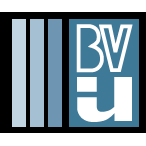From Fiction to Facts of Life
(View Complete Item Description)Fiction is untrue, but it can be an honest reflection of real life. In this seminar, you will make clear connections between the lives of characters in fiction to the lives of people in the real world. This will require a skill called abstracting in which you find patterns in one area and apply them to a new situation. It will also give you the opportunity to reflect on how fake worlds of literature can help resolve your own personal issues that you face currently and in the future.StandardsCC.1.3.9-10.C - Analyze how complex characters develop over the course of a text, interact with other characters, and advance the plot or develop the theme.CC.1.3.9-10.E - Analyze how an author’s choices concerning how to structure a text, order events within it and manipulate time create an effect.CC.1.3.9-10.H - Analyze how an author draws on and transforms themes, topics, character types, and/or other text elements from source material in a specific work.
Material Type: Lesson Plan




















